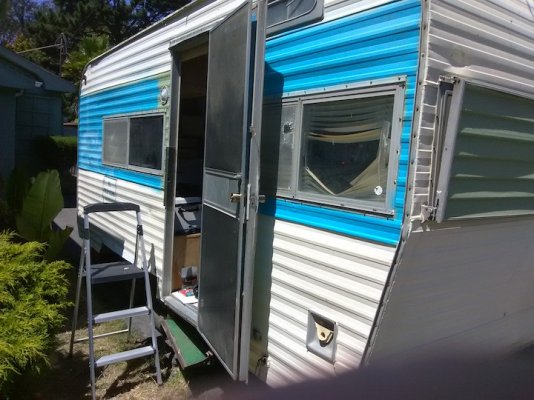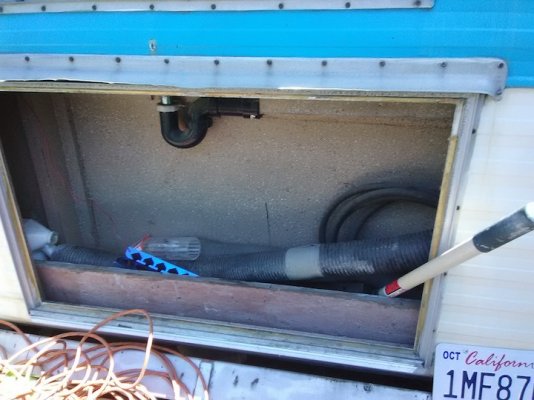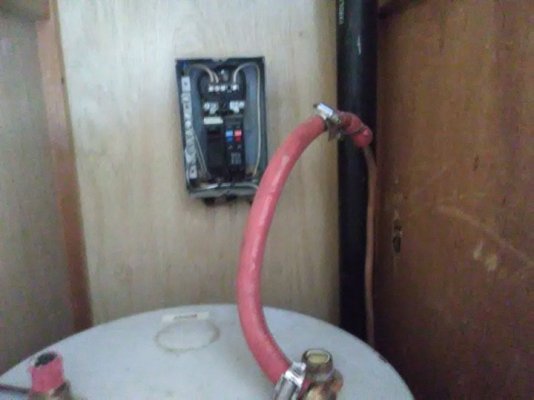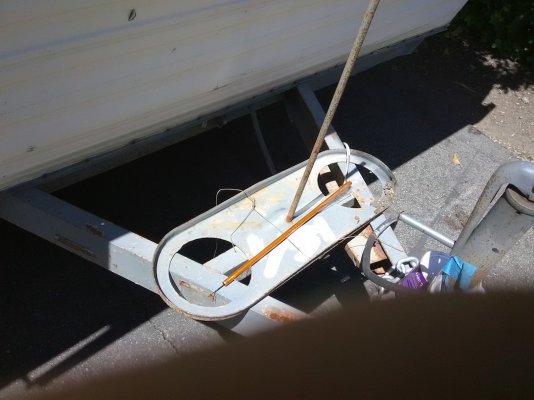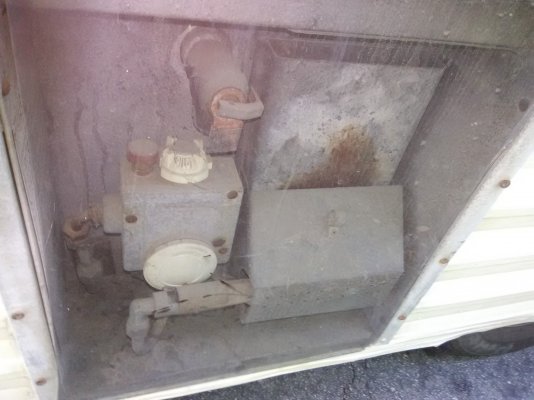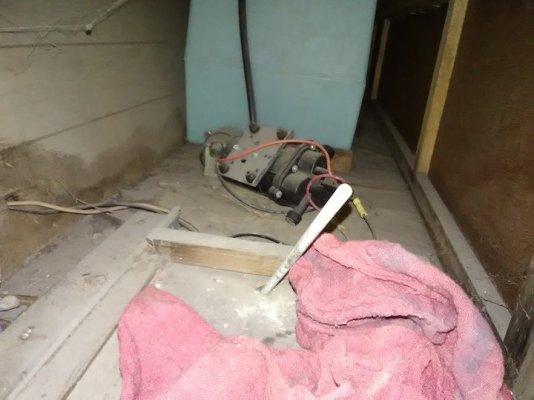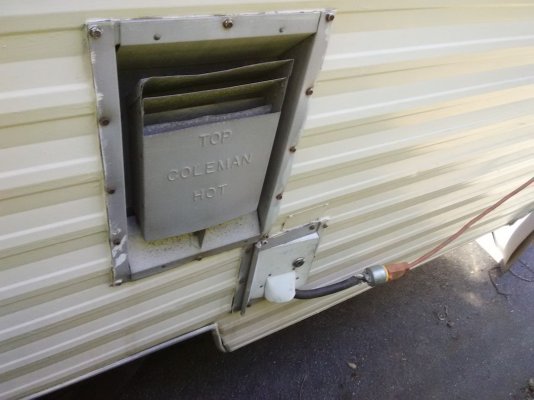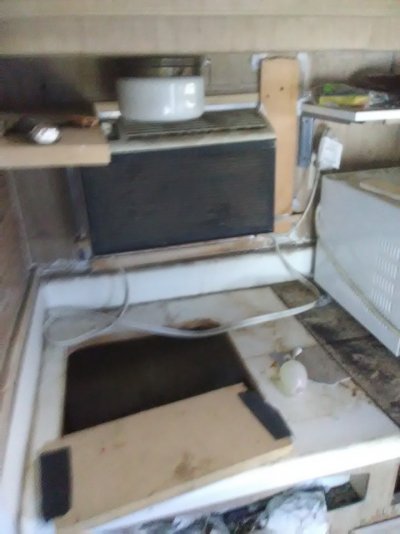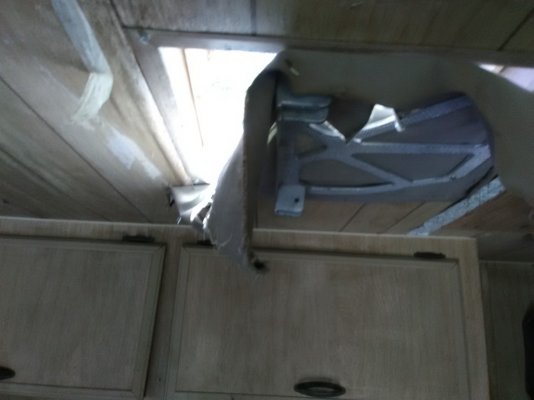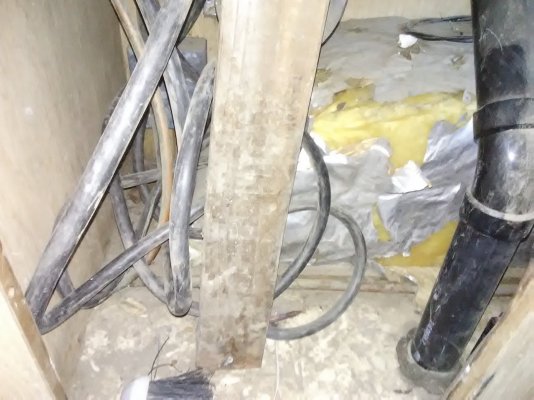[quote author=SpencerPJ ]
What are you pulling this with?
[/quote]
2008 Toyota Sienna minivan with the tow package - max weight 3500 lbs. I KNOW but the impound yard insisted that the trailer was underweight, and we made it all the way up to Santa Cruz County and still have a working transmission.
[/size][quote author=SpencerPJ ]
Do you hope to travel around, or find a place to park, plug in, and live?
[/quote]
Haven't gotten that far yet tbh. We had some land in Kern County lined up to set up as an RV park/event space thing, but it fell through. If we can find a place to plug in and live that'd be fine but I don't see that happening soon.
[/size][quote author=SpencerPJ ]
Do you know if there are tanks under it? Fresh, black, grey?
[/quote]
There's what looks like a tank in the "possibly used to be the generator" bay and a pump wired in to something. As the other end of that tank is close to where that broken thing on the right front is, I'm assuming it's the fresh water tank.
I physically am unable to get underneath to look, and the Mrs. has been dealing with family drama, so no idea what else we have right now.
[/size][quote author=SpencerPJ]
I understand, you need shelter. I guess if it needs moved, brakes, regrease the bearings, and if the tires are older than 6-8 years, doesn't matter about the tread, they need replaced. (there's a 4 digit number on them, example: 1814 would mean made in week 18 of 2014.)
[/quote]
We replaced one tire because it was shredded, and I got a lesson in how to take the brakes out and grease the axles when one of the brakes locked up on Hwy 99. The other one locked up as the neighbors were backing it into the driveway here, but the parts are still there, so once I get the wheel off I can get the parts out and measure the drum.
[/size][quote author=SpencerPJ]
[/size]You mentioned renting a jack, your truck or whatever might have a jack that would work. Just block the other side so it doesn't roll on you.
If brakes are # concern to move it, I'd start there.
Take a wheel off, and post a picture.
That trailer and vintage, might not even have brakes. OR you might have to retro fit them to modern technology. There are people on this forum have the electrical knowledge to do that (not me), but it will assume that you are fairly handy and have access to minimal tools.
[/quote]
I don't know if the little jack that came with the minivan can jack up the trailer - but I don't know that it can't so I'll give it a shot if I can find the thing. Either the trailer did in fact come with brakes or someone has already retrofitted them. I'll post pics tomorrow when I get the wheel off.
Appreciate the help and advice, y'all. This is way above any mechanical experience I have. I don't know where the /size tags are coming from and I'm too exhausted to figure out how to delete them so sorry

